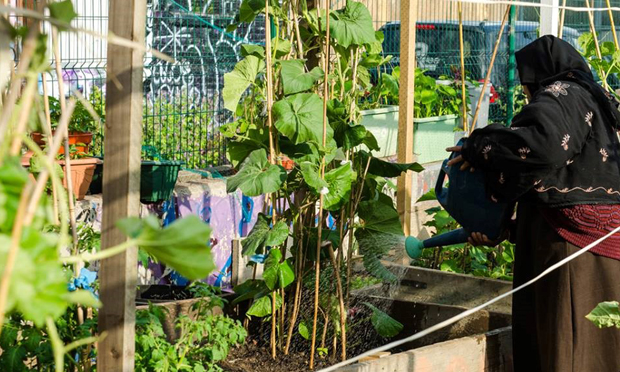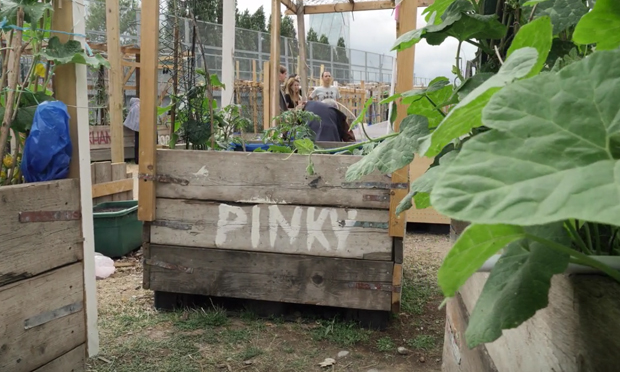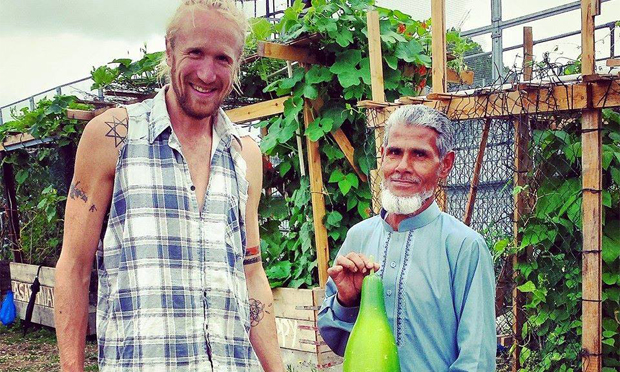Communal gardens come into bloom

Growing: the social enterprise hopes to expand to more sites. Photograph: Nomadic Community Gardens
Buried behind Brick Lane, an urban garden is flowering in the cracks between densely-packed buildings and railway tracks.
Around 100 free allotments, towering tyre sculptures, street art, a scrap yard and a public park sprawl across the 2.5 acre site on Fleet Street Hill, a stone’s throw from Spitalfields.
Nomadic Community Gardens (NCG), the team behind the communal space, is a social enterprise that aims to turn disused land into free communal spaces with gardens, workshops and events.
They identify ‘meanwhile’ places, land in pre-development stages, and gain permission to use the space for a pop-up community garden.
“It is important to show everybody that this is what can be done with this land,” says James Wheale, the social enterprise’s director.
Developers Londonewcastle have permission for a mixed use housing and business scheme. Until they begin work, they’ve allowed NCG to put down roots and transform the site into communal gardens.

Pop-up: one of the 100 moveable allotments. Photograph: Nomadic Community Gardens
The gardens are nomadic because almost everything installed is fully transportable. The beds are built in raised wooden boxes that can be moved elsewhere, meaning the garden can up sticks and leave at the drop of a hard hat.
In return Londonewcastle gains low-cost guardians to maintain the land and fend off anti-social behaviour, as well as goodwill from residents for allowing the land to be used.
“We are not making a political stand about development and land use,” says Wheale. “We’re just trying to exist between the cracks. We want to act as a conduit between corporations who have these land resources and communities who benefit from the use of the land.”
Community resource
Wheale was astounded by the interest in the allotments from nearby residents. “We couldn’t build them quickly enough!” he says.
“The demand was amazing. People kept coming down to ask for flowerbeds. It felt as though we were providing something desperately needed in the area.”
Those living closest by are given priority over the flowerbeds. “It makes sense practically and also in terms of fairness – people living nearby should be the ones to access the resource. And it helps grow the community and engage with people closest to you.”
The beds are free to use but the team invites contributions towards the cost of sustaining garden. “We didn’t want to exclude anyone based on income,” Wheale says.
“We rely on the ability of the garden to make its own money – we host events in the summer and we receive donations from people inspired by what we have done.”

Cream of the crop: James Wheale and a resident clutching a khodu. Photograph: Nomadic Community Gardens
The site nestles in the heart of a large Bangladeshi community, whose members tend to grow vegetables in the nomadic gardens that are native to their country, such as khodu, a kind of hanging green squash.
But Wheale hopes to grow not just vegetables but a whole community. “What matters most to people is their quality of life,” adds Wheale.
“In cities where the cost of living is increasing, how do you create spaces that enable people to form relationships that change their quality of life?”
Nomadic Community Gardens is open every from 10am – 10pm. On 20 March they are holding an open day with music, food and refreshments to launch their summer programme.
Nomadic Community Gardens from Ross Harrison on Vimeo.